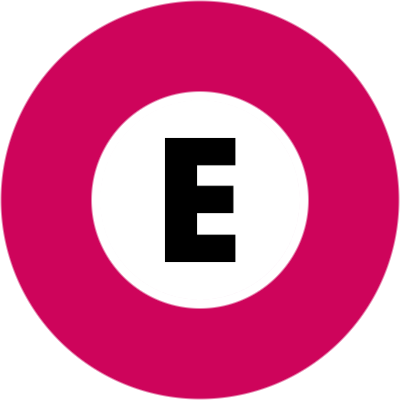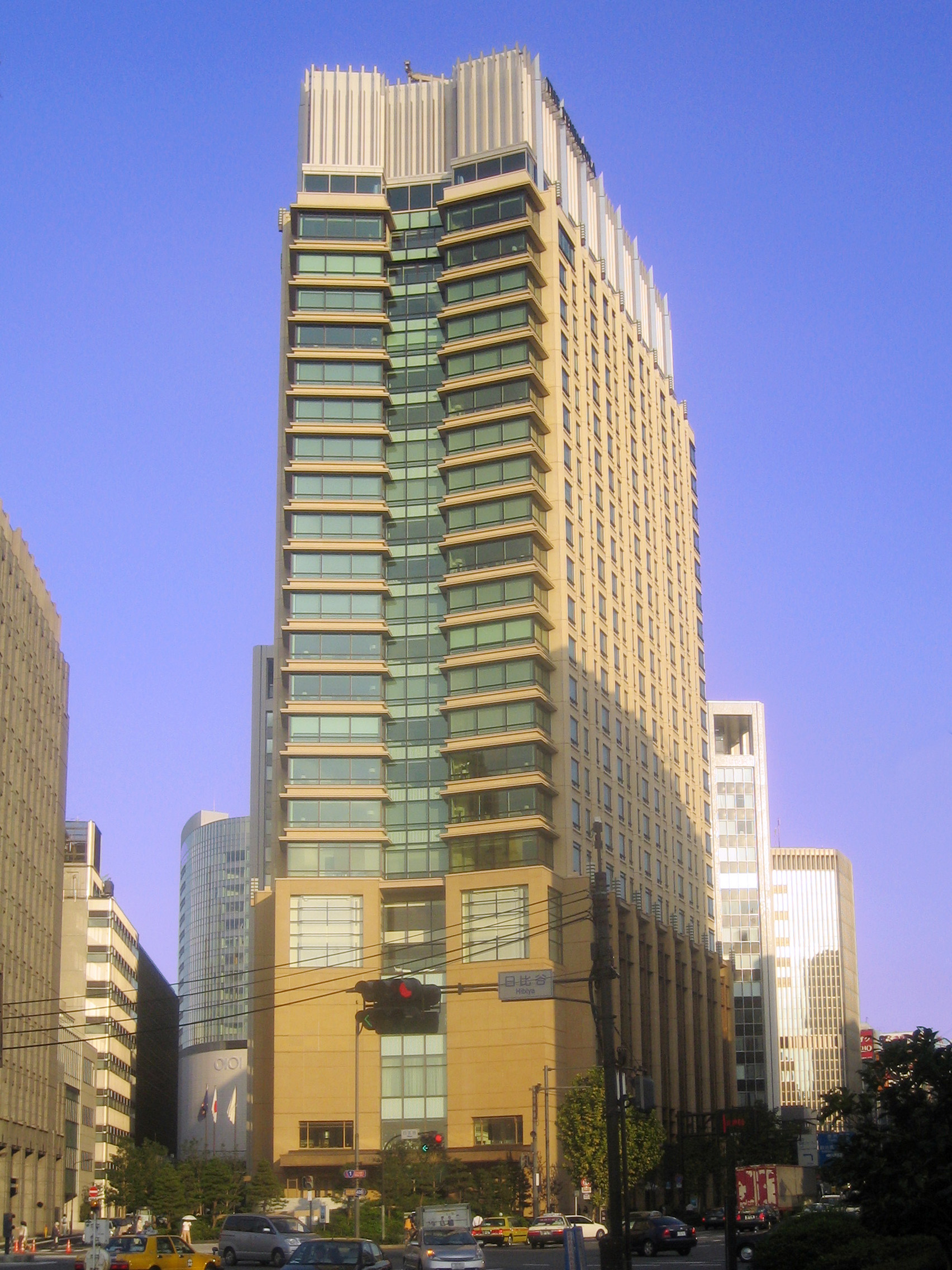|
Tokyo Metro Yūrakuchō Line
The is a subway line in Japan owned and operated by Tokyo Metro. The line connects Wakōshi Station in Wakō, Saitama and Shin-Kiba Station in Kōtō, Tokyo. On maps, diagrams and signboards, the line is shown using the color "gold" (), and its stations are given numbers using the letter "Y". The line was named after the Yūrakuchō business district in Chiyoda, Tokyo. The proper name as given in an annual report of the Ministry of Land, Infrastructure and Transport is . According to the Tokyo urban transportation plan, however, it is more complicated. The line number assigned to the section south from Kotake-Mukaihara to Shin-Kiba is Line 8, but that north of Kotake-Mukaihara to Wakōshi is Line 13, which indicates the section is a portion of Fukutoshin Line which shares the same number. Services The Yurakucho Line has inter-running counterparts on its northern side, both of which are "major" Japanese private railway companies in Greater Tokyo. One is the Tobu Railway at ... [...More Info...] [...Related Items...] OR: [Wikipedia] [Google] [Baidu] |
Rapid Transit
Rapid transit or mass rapid transit (MRT), also known as heavy rail or metro, is a type of high-capacity public transport generally found in urban areas. A rapid transit system that primarily or traditionally runs below the surface may be called a subway, tube, or underground. Unlike buses or trams, rapid transit systems are railways (usually electric railway, electric) that operate on an exclusive right-of-way (transportation), right-of-way, which cannot be accessed by pedestrians or other vehicles, and which is often grade-separated in tunnels or on elevated railways. Modern services on rapid transit systems are provided on designated lines between rapid transit station, stations typically using electric multiple units on rail tracks, although some systems use guided rubber tires, magnetic levitation (''maglev''), or monorail. The stations typically have high platforms, without steps inside the trains, requiring custom-made trains in order to minimize gaps between train a ... [...More Info...] [...Related Items...] OR: [Wikipedia] [Google] [Baidu] |
Wakōshi Station
is an interchange passenger railway station located in the city of Wakō, Saitama, Japan, operated by the private railway operator Tōbu Railway and Tokyo subway operator Tokyo Metro. It is the only Tokyo Metro station located in Saitama Prefecture. It is the westernmost station in the Tokyo subway network, and the northernmost Tokyo Metro station ( Nishi-Takashimadaira on the Toei network is farther north). Lines Wakōshi Station is served by the Tōbu Tōjō Line from to and in Saitama Prefecture. It also forms the northern terminus of the Tokyo Metro Yurakucho Line and Tokyo Metro Fukutoshin Line, with some trains continuing northward on the Tobu Tojo Line to and . Trains continuing onto the Tobu Tojo Line from Tokyo Metro lines all change drivers here: Tobu Railway drivers take over trains from Tokyo and Tokyo Metro drivers take over trains towards Tokyo. Located between Narimasu and Asaka stations, it is 12.5 km from the Ikebukuro terminus. Station layout The stat ... [...More Info...] [...Related Items...] OR: [Wikipedia] [Google] [Baidu] |
Seibu Yūrakuchō Line
The is an underground commuter railway line operated by the private railway operator Seibu Railway in Japan. The line links the Seibu Ikebukuro Line at Nerima Station with the Tokyo Metro Yūrakuchō Line and Tokyo Metro Fukutoshin Line at Kotake-Mukaihara Station in Nerima, Tokyo. Stations Rolling stock Seibu trains *Seibu 6000 series *Seibu 40000 series * Seibu 40050 series Tokyo Metro trains * Tokyo Metro 10000 series *Tokyo Metro 17000 series Tokyu trains * Tokyu 5000 series * Tokyu 5050 series * Tokyu 5050-4000 series (since 10 September 2012) Yokohama Minatomirai Railway trains * Yokohama Minatomirai Railway Y500 series File:Seibu 6000 kei Fliner.JPG, Seibu 6000 series File:Seibu Railway 40000 Series 40102F set.jpg, Seibu 40000 series File:Tokyo metro 7000 kei Fliner.JPG, Tokyo Metro 7000 series File:Seibu ikebukuro line 5000 kei.JPG, Tokyu 5050-4000 series File:Yokohama Minatomirai Railway Y500 Series Y514F Rapid Express.jpg, Yokohama Minatomirai Railway Y50 ... [...More Info...] [...Related Items...] OR: [Wikipedia] [Google] [Baidu] |
Seibu Railway
is a conglomerate based in Tokorozawa, Saitama, Japan, with principal business areas in railways, tourism, and real estate. Seibu Railway's operations are concentrated in northwest Tokyo and Saitama Prefecture; the name "Seibu" is an abbreviation of "west Musashi", referring to the historic name for this area. It and its holding company hold shares of numerous bus, hotel and tourism operations nationwide. History "Seibu Railway" was originally the name of a tram service between Shinjuku and Ogikubo, which was transferred to the Tokyo metropolitan government in 1951 and eventually closed in 1962. The Seibu Railway was acquired in 1921 by the Kawagoe Railway, which had operated a train service between Kokubunji and Kawagoe since 1894; the merged company kept the "Seibu" name and expanded its main line to Takadanobaba, forming what is now known as the Seibu Shinjuku Line. The current Seibu Railway is a product of a 1945 merger between the former Seibu Railway and the Musashino ... [...More Info...] [...Related Items...] OR: [Wikipedia] [Google] [Baidu] |
Tobu Railway
is a Japanese commuter railway and ''keiretsu'' holding company in the Greater Tokyo Area as well as an intercity and regional operator in the Kantō region. Excluding the Japan Railways Group companies, Tobu's rail system is the second longest in Japan after Kintetsu. It serves large portions of Saitama Prefecture, Gunma Prefecture and Tochigi Prefecture, as well as northern Tokyo and western Chiba Prefecture. The Tobu Railway Company is listed in the First Section of the Tokyo Stock Exchange and is a constituent of the Nikkei 225 index. The Tobu corporate group is also engaged in road transportation (bus/taxi), real estate, and retail. It is the owner of the Tokyo Skytree, the tallest tower in the world. The company is a member of the Fuyo Group ''keiretsu''. The name "Tobu" is formed from the kanji for east (''東'') and Musashi (''武''蔵), the initial area served. History Tobu is one of the oldest railway companies in Japan. It was established in November 1897 and bega ... [...More Info...] [...Related Items...] OR: [Wikipedia] [Google] [Baidu] |
Greater Tokyo
The Greater Tokyo Area is the most populous metropolitan area in the world, consisting of the Kantō region of Japan (including Tokyo Metropolis and the prefectures of Chiba, Gunma, Ibaraki, Kanagawa, Saitama, and Tochigi) as well as the prefecture of Yamanashi of the neighboring Chūbu region. In Japanese, it is referred to by various terms, one of the most common being . As of 2016, the United Nations estimates the total population at 38,140,000. It covers an area of approximately 13,500 km2 (5,200 mi2), giving it a population density of 2,642 people/km2. It is the second largest single metropolitan area in the world in terms of built-up or urban function landmass at 8,547 km2 (3,300 mi2), behind only the New York City metropolitan area at 11,642 km2 (4,495 mi2). Definition There are various definitions of the Greater Tokyo Area, each of which tries to incorporate different aspects. Some definitions are clearly defined by law or government reg ... [...More Info...] [...Related Items...] OR: [Wikipedia] [Google] [Baidu] |
Private Railway
A private railway is a railroad run by a private business entity (usually a corporation but not need be), as opposed to a railroad run by a public sector. Japan In Japan, , commonly simply ''private railway'', refers to a public transit railway owned and operated by private sector, almost always organized as a joint-stock company, or in Japanese: kabushiki gaisha (lit. stock company), but may be any type of private business entity. Although the Japan Railways Group (JR Group) companies are also kabushiki gaishas, they are not classified as private railways because of their unique status as the primary successors of the Japanese National Railways (JNR). Voluntary sector railways (semi-public) are additionally not classified as ''shitetsu'' due to their origins as rural, money-losing JNR lines that have since been transferred to local possession, in spite of their organizational structures being corporatized. Among ''private railways'' in Japan, the categorizes 16 companies as "ma ... [...More Info...] [...Related Items...] OR: [Wikipedia] [Google] [Baidu] |
Through Train
A through service is a concept of passenger transport that involves a vehicle travelling between lines, networks or operators on a regularly specified schedule, on which the passenger can remain on board without alighting. It may be in form of either the following: * A service where the vehicle travels between different lines, or systems of infrastructure, for example, a through train service between the mainline and underground railways. * A service where the vehicle changes its identity en-route without requiring passengers to alight, for example, a through tram service which runs as route 1 initially, then runs as route 2 for the latter half of the journey. The term through service may be extended to have a wider meaning encompassing a route which allows the passenger to travel without alighting, for example, in a route change announcement, if a route A-B and a route B-C is combined to A-B-C, it may be described as a new "through service" between A and C. This is in contrast with ... [...More Info...] [...Related Items...] OR: [Wikipedia] [Google] [Baidu] |
Tokyo Metro Fukutoshin Line
The , formally the , is a subway line operated by Tokyo Metro in west-central Tokyo and Wako, Saitama, Japan. The newest line in the Tokyo subway network, it opened in stages between 1994 and 2008. On average, the Fukutoshin line carries 362,654 passengers daily in 2017, the lowest of all Tokyo Metro lines and roughly one third of its sister Tokyo Metro Yūrakuchō Line (1,124,478). Overview The Fukutoshin Line is the deepest metro line in Tokyo, with an average depth of 27 meters. At Shinjuku-sanchōme Station, the line passes under the Marunouchi and above the Shinjuku lines at a depth of 15 meters, with a gap of only 11 centimeters to the Shinjuku Line tunnel. The deepest section is at the immediately adjacent Higashi-Shinjuku Station, where the line goes down to 35 meters, partly due to an underground space reservation for a possible future extension of the Jōetsu Shinkansen to Shinjuku. It is the second Tokyo Metro line to feature express services, after the Tōzai Line ... [...More Info...] [...Related Items...] OR: [Wikipedia] [Google] [Baidu] |
Ministry Of Land, Infrastructure And Transport (Japan)
The , abbreviated MLIT, is a ministry of the Japanese government.国土交通省設置法 , Ministry of Internal Affairs and Communications. It is responsible for one-third of all the laws and orders in Japan, and is the largest Japanese ministry in terms of employees, as well as the second-largest executive agency of the Japanese government after the . The ministry oversees four external agencies including the and the |
Chiyoda, Tokyo
is a special ward located in central Tokyo, Japan. It is known as Chiyoda City in English.Profile ." ''City of Chiyoda''. Retrieved on December 28, 2008. It was formed in 1947 as a merger of and wards following 's transformation into Tokyo Metropolis. The modern Chiyoda ward exhibits contrasting |
Yūrakuchō
is a business district of Chiyoda, Tokyo, Japan, situated in between the Ginza and Hibiya Park, southeast of the Tokyo Imperial Palace. The district takes its name from Oda Nagamasu (1547–1622), who was also known as Yūraku (有楽). Oda Nagamasu built his mansion here on land granted by Tokugawa Ieyasu near the Sukiya-bashi Gate of Edo Castle. The place name dates from the Meiji period. Yūrakuchō is served by several train and subway stations, including Hibiya Station (Toei Subway and Tokyo Metro lines) and Yūrakuchō Station (JR East and Tokyo Metro lines). Unlike its tonier neighbor Ginza, Yūrakuchō provides a glimpse of Japanese life from the early postwar period, with its many ''izakaya'' (Japanese-style bars, denoted by their red lanterns known as '' akachochin'') and outdoor ''yakitori'' restaurants, many of which are located near or under the train tracks serving Tokyo's JR Yamanote Line. Because of its easy access to Tokyo Station, Yūrakuchō bars and restauran ... [...More Info...] [...Related Items...] OR: [Wikipedia] [Google] [Baidu] |







